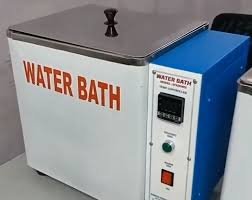SOP for Operating Procedure of Water Bath

Standard Operating Procedure (SOP) for Operation of Water Bath
1.0 Purpose
To define the procedure for the correct operation of the water bath to ensure uniform and controlled heating of laboratory samples.
2.0 Scope
This SOP applies to all Quality Control (QC), Microbiology, and Analytical laboratory personnel involved in the operation of the water bath.
3.0 Responsibility
-
Analyst/Operator: To operate the water bath as per SOP.
-
QC/Section Head: To verify proper operation and review usage records.
-
Engineering/Maintenance: For calibration, servicing, and repairs.
4.0 Definitions
-
Water Bath: A laboratory device used to incubate samples at a constant temperature over a period of time.
5.0 Procedure
5.1 Pre-Checks
-
Ensure the water bath is clean and free from dust or residues.
-
Check water level and ensure it is above the heating coil.
-
Verify that only distilled or deionized water is used to prevent scaling.
-
Check the calibration/validation status of the water bath.
5.2 Operation
-
Switch ON the main power supply.
-
Set the desired temperature using the control knob/digital keypad.
-
Allow the water bath to reach and stabilize at the set temperature.
-
Confirm temperature with a calibrated thermometer/probe (if required).
-
Place samples in the water bath, ensuring containers are properly sealed and supported.
-
Close the lid (if provided) to minimize evaporation and heat loss.
-
Monitor periodically during use to ensure temperature stability.
5.3 Post-Operation
-
Remove samples carefully after completion of heating/incubation.
-
Switch OFF the water bath.
-
Drain and replace water regularly (e.g., once per week or as per lab SOP).
-
Clean the inner chamber with lint-free cloth and 70% IPA or as recommended.
-
Cover the unit when not in use.
6.0 Precautions
-
Do not operate without sufficient water level.
-
Avoid immersing electrical components in water.
-
Use heat-resistant gloves when handling hot containers.
-
Ensure proper labeling of samples before placing in the bath.
-
Replace water regularly to prevent microbial growth.
7.0 Documentation
-
Record usage details in the instrument logbook.
-
Note down temperature settings and observations in the respective worksheet.
8.0 References
-
Manufacturer’s Instruction Manual
-
Internal QA/QC Laboratory Procedures
🎓 Discover one of the best Pharmaceutical Microbiology course available —click below to explore the course that’s shaping future Microbiology course skills.

